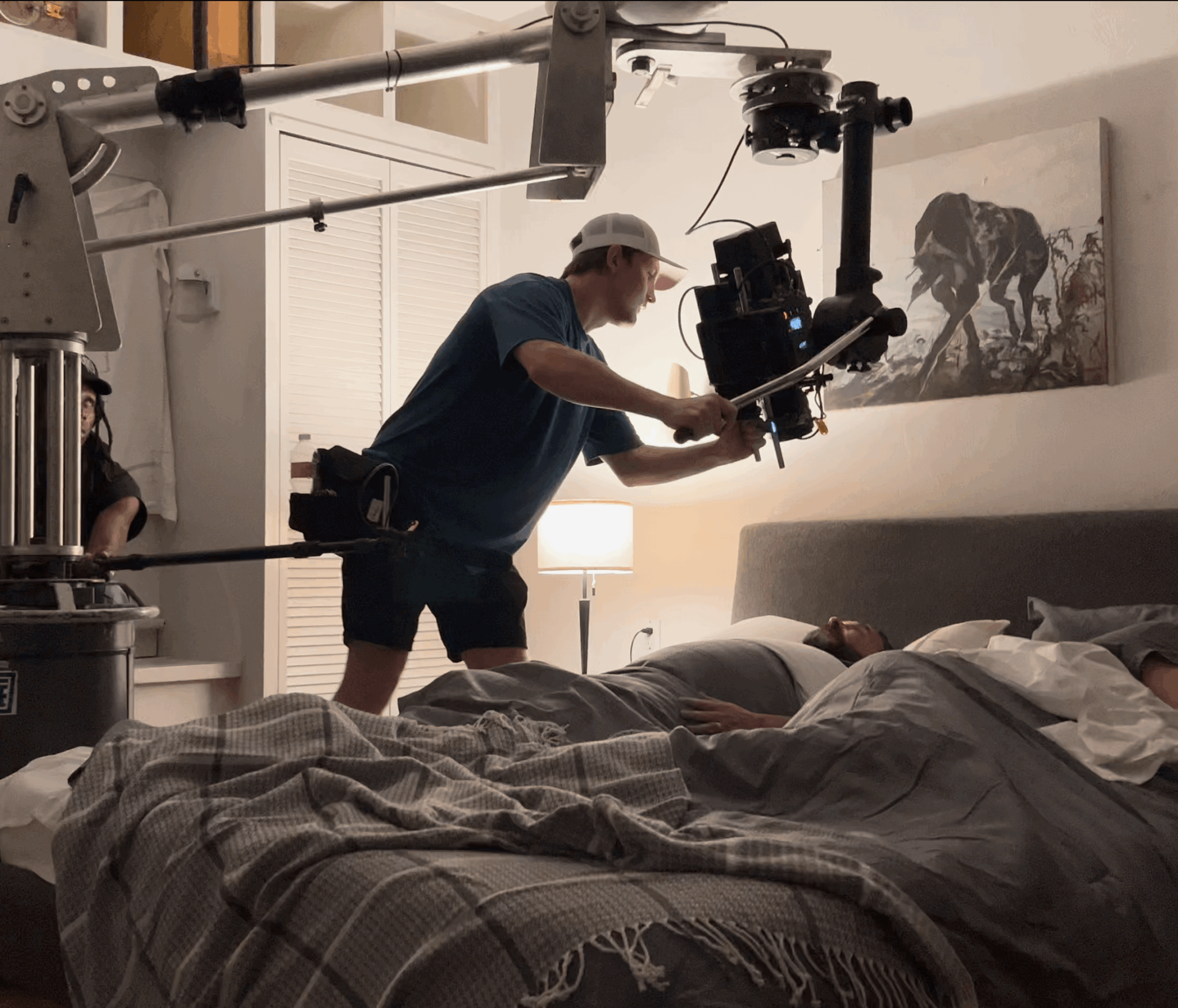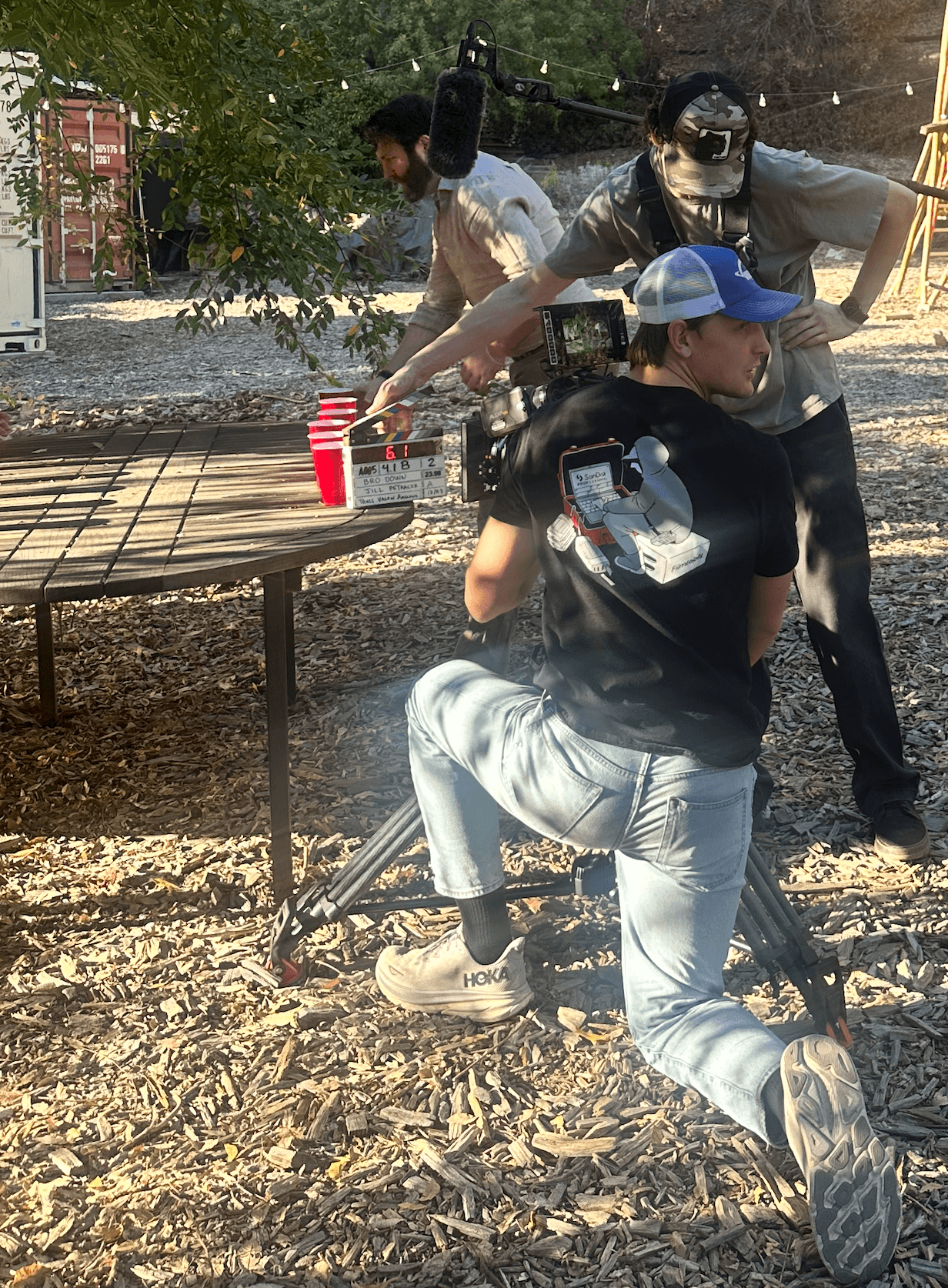We were lucky to catch up with Truls recently and have shared our conversation below.
Alright, Truls thanks for taking the time to share your stories and insights with us today. Learning the craft is often a unique journey from every creative – we’d love to hear about your journey and if knowing what you know now, you would have done anything differently to speed up the learning process.
I’d say my learning process has been a mix of self-teaching and formal education. I started my filmmaking journey by teaching myself, reading books, watching tutorials, and diving deep into online resources to understand cameras, lighting, and storytelling from a technical perspective. That gave me a solid foundation, but I quickly realized that there was another side to the craft: understanding how larger sets operate, how to communicate within a crew, and how to use industry-standard workflows and language.
That realization is what led me to move from Norway to Los Angeles to attend film school. I wanted to gain that higher-level technical knowledge and experience working in professional environments. Film school definitely helped me connect the dots between what I knew technically and how it all comes together on a larger scale production.
But honestly, I think most of my learning has come from experience, being on set, making mistakes, solving problems, and observing other DPs. There’s something about trial and error that really cements what works and what doesn’t. Shadowing more experienced cinematographers has also been invaluable, but nothing compares to just doing it yourself.
If I could speed up my learning process, I’d probably have sought out mentorship and set experience even earlier. Watching others work and being part of real productions teaches you things no book or video can.
The most essential skills, in my opinion, are adaptability, communication, and a willingness to keep learning. This profession is constantly evolving with new cameras, lighting tools, and workflows appearing every year, and the best people in the industry are those who never stop being curious. I don’t think I’ll ever feel fully educated as a DP, and that’s exactly what I love about it.

Truls, before we move on to more of these sorts of questions, can you take some time to bring our readers up to speed on you and what you do?
As a cinematographer, my work revolves around finding the right visual language for each story. Every project is different, and I enjoy the process of figuring out what combination of tools, and creative choices best supports the tone and emotion of what we are trying to say. I see my role as both a creative collaborator and a problem solver, someone who helps translate an idea or a feeling into something tangible and cinematic.
I first got into filmmaking after receiving my first camera as a teenager. What started as curiosity quickly grew into a deep fascination with how light and composition can shape emotion. That curiosity is still at the core of how I approach my work today. I’m constantly observing how light behaves in everyday life, whether it’s reflections rippling across a window from passing cars, a shadow slowly shifting across a wall during the afternoon, or candlelight warming a face in a dark room. These small, natural moments often inspire how I shape the look of a scene.
My approach is rooted in curiosity and adaptability. I try not to force a specific style onto a project but instead listen to what the story needs and build the visuals around that. I also enjoy finding the most efficient and elegant path to get there, whether that means choosing the right lens, crafting naturalistic lighting, or embracing simplicity.
While I’ve worked across a range of narrative, commercial, and documentary projects, what connects them all is a desire to make images that feel honest and immersive. I want my work to make people feel something, even if they can’t quite explain why.
What I’m most proud of is the consistency of growth. Every shoot teaches me something new, whether it’s a creative insight or a technical solution. My goal is to always approach each project with the same openness and curiosity that first drew me to filmmaking.

Looking back, are there any resources you wish you knew about earlier in your creative journey?
There are so many great tools and resources available now that really support the work of a cinematographer, especially in the pre-production phase. Websites like ShotDeck, Frameset, and EyeCandy are incredible for building visual references and communicating ideas. I also often use technical comparison tools, like the Lee Filters diffusion comparison page.
That said, I still have a special place in my heart for print magazines like American Cinematographer from the ASC and British Cinematographer from the BSC. They’ve always been fantastic sources of both inspiration and technical knowledge. You get to see how other cinematographers think and approach their work in real-world situations, which I find incredibly valuable. And in such a digital world, there’s something grounding about sitting down with a physical magazine and taking the time to read through a detailed conversation about the craft.

Do you have any insights you can share related to maintaining high team morale?
There’s a saying that you should lead from the front, not from the back, and that’s something I strongly believe in. During my time in the Norwegian military, I saw firsthand how powerful that mindset can be. Leadership isn’t about giving orders from a distance; it’s about setting the tone through your own attitude and work ethic. When your team sees that you’re dedicated, calm under pressure, and willing to put in the effort, it creates a ripple effect. People naturally match that energy.
That lesson has carried over into my work as a cinematographer. Although the film industry is a very different environment, the core principle is the same: you get the best results when everyone feels valued and invested. Filmmaking is deeply collaborative, and I believe morale comes from giving people a sense of ownership in the project. When someone in grip and electric, for example, feels like they’re part of the creative process rather than just moving lights around, it changes everything.
I always encourage input from my crew, whether it’s an idea for a lighting setup or a small efficiency tweak. Not every idea will make it into the final plan, but creating space for collaboration builds trust and keeps the energy on set positive. There are so many talented people in this industry, and the best outcomes happen when everyone feels empowered to bring their experience and creativity to the table.
Contact Info:
- Website: https://trulsvalenaasland.com
- Instagram: https://www.instagram.com/trulsva


